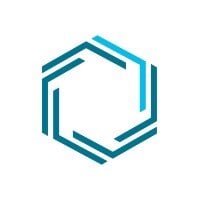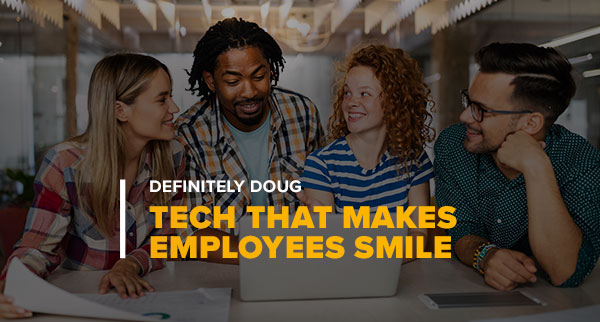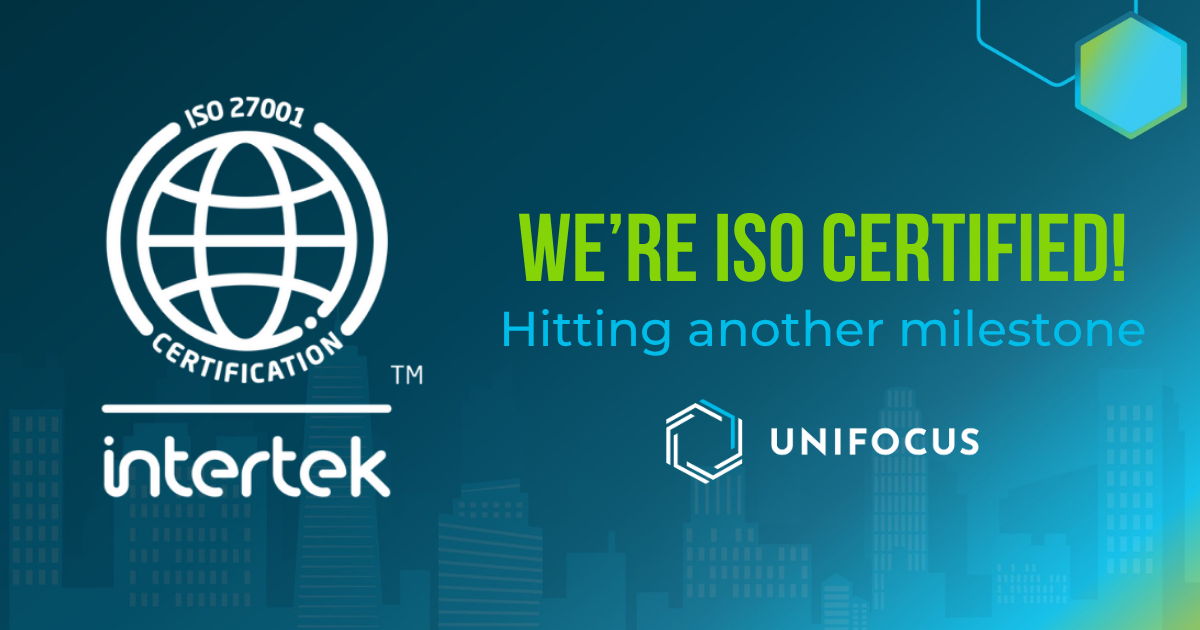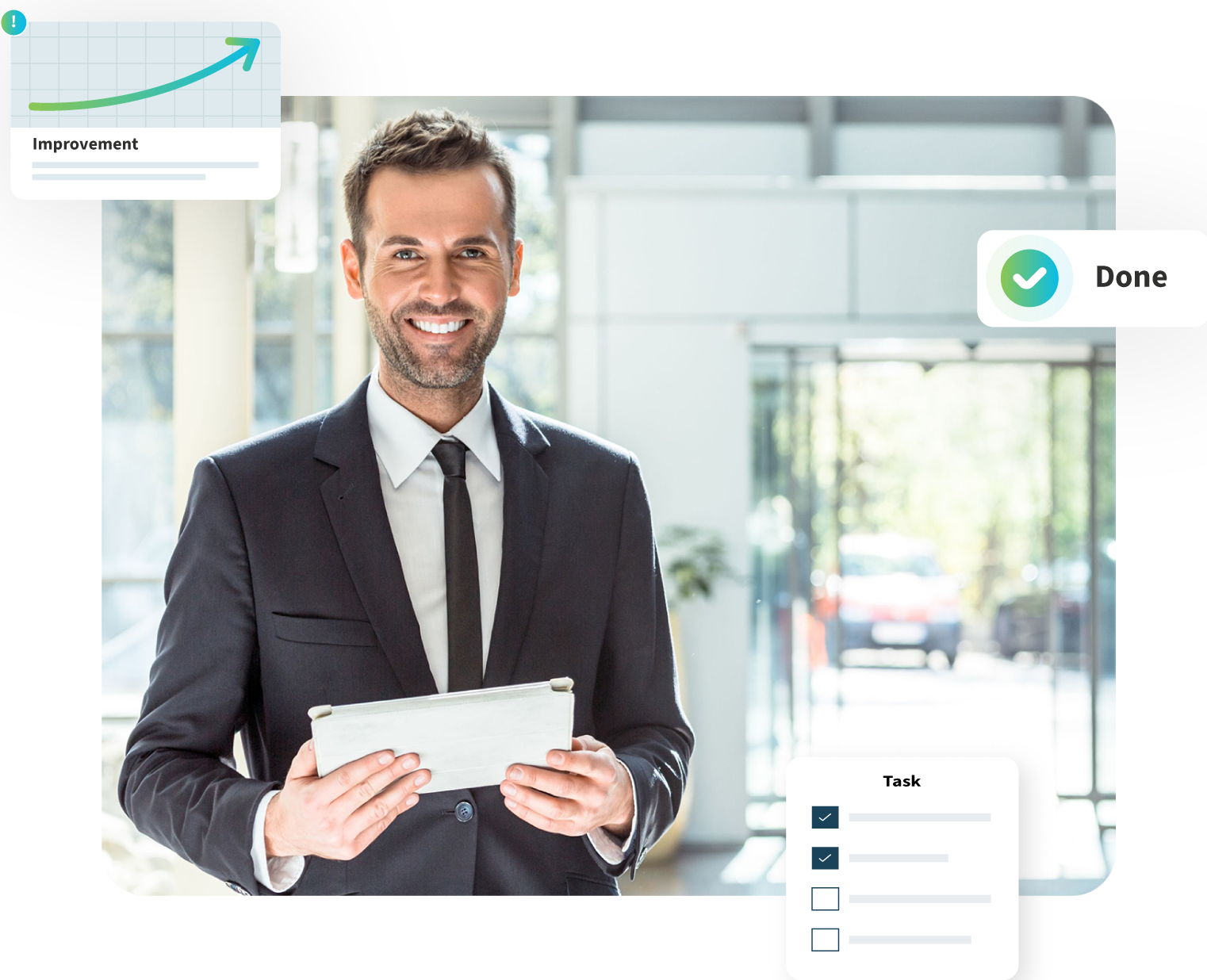April 9, 2021 - By Doug Rice - Published in Hospitality Upgrade - My last blog addressed the hiring spree that appeared on the horizon once future bookings finally started trending upwards. Several senior hoteliers told me that it was right on the mark, that some hotels now have more than 100 open positions – and very few applicants. Former staff have either moved on to other, more stable industries, and they as well as potential new hires may be disincentivized to return to work by continuing government subsidies and/or child-care needs. If the rapid change from furloughs to hiring spree describes your situation, then you will want to explore some of the tech options I raised in the earlier blog, which continues here.
Hiring new staff is the critical first step, and the last blog covered software that can help source, evaluate, interview, and onboard them. But once new employees are on board, how can we ensure they stay? The hotel industry has had notoriously high turnover in front-line staff positions. The costs of this turnover are enormous: recruiting, screening, interviewing, background and drug tests, training, waiting for new employees to become fully productive (most do not even stay long enough for this to happen!), and service recovery costs from negative guest encounters with inexperienced staff.
This week I will cover technology to improve your staff retention rate. The two main categories of technology that can help are staff communications platforms and staff engagement software. Some products focus mostly on one area or the other, while many integrate aspects of both. The two are interrelated: employees will not engage if no one communicates with them. At the same time, digital communication tools alone do not engage employees; that will depend on the content, frequency, and timing of the communication. Success requires not just that communication happens, but that it be engaging for the staff and productive for the hotel.
Why do communications and engagement software matter? Consider the workday of room attendants, the most common front-line position in most hotels. They spend most of their shift working alone in guest rooms. They have little interaction with colleagues, guests, or managers. They miss out on most of the human connections that can make menial work tolerable – connections that are readily available in retail, restaurant, and other unskilled jobs. Language issues often separate them from colleagues, guests, and managers.
Even the best manager will be challenged to keep housekeeping staff feeling connected, engaged, and an important contributor to the hotel’s success; weaker ones may barely try. Communication tools can enable managers to more proactively engage workers who toil outside their line of sight, while engagement tools can automate some of the communications so that it happens more consistently and with less time and conscious effort by the manager.
According to a Gallup survey, businesses with higher employee engagement are 22% more profitable and 21% more productive, as well as suffer much less turnover. And research from Accumulate says that 65% of lost customers can be traced back to a disengaged employee. Gallup also reported that highly engaged business units achieved a 10% increase in customer ratings and a 20% increase in sales. Another Gallup study showed that highly engaged business units realize a 41% reduction in absenteeism and a 17% increase in productivity. Clearly, engagement matters.
And yes, hotels have a problem with engagement. A study by Hotel Effectiveness of 473,000 terminations of rooms division and food and beverage staff between 2012 and 2019 showed that 64% of them left in their first six months and 78% in their first year. Staff that turns over on average nearly three times per year is unequivocal evidence of low engagement and, per Gallup, subpar business performance. Disappointingly, that describes the hotel industry in much of the world.
Most hotel guests made the transition to the digital world years ago, and hotels gradually (and often somewhat grudgingly) adapted. Today, we can also say that most front-line hotel staff, like guests, have gone digital in their day-to-day lives. It has been a slow and generational change to be sure, but in most of the world the transition is nearly complete. To not use digital communications and engagement tools with staff today is analogous to using a campfire behind the hotel to cook food for the restaurant – entirely possible, but a relic of the past.
Evaluating Communication Tools
In evaluating communication tools, what is important? The best support newsfeeds, announcements, directed communications, bulletin boards, chat, and social exchange.
- Newsfeed may be picked up from the hotel’s social media pages, syndicated feeds, or other sources.
- Announcements can be used for meetings and events; to communicate hotel, departmental, and team performance statistics; or to recognize star employees.
- Directed communications can enable managers to send specific policy or process changes or operational requirements to an entire group of employees, such as room attendants; to assign a specific task to a single colleague; or to communicate something that is only relevant to staff on duty during a particular period of time.
- Bulletin boards can cover both ongoing company notifications and staff-generated content such as items for sale or new-baby photos.
- Chat enables employees working solo to stay in touch with supervisors, colleagues, and other hotel staff who need to interact with them.
- Social exchange can help create greater cohesion by enabling staff to share aspects of their non-work selves with colleagues, as well as to celebrate special occasions.
The combination of these tools can help with engagement and can also be used to re-engineer many business processes. For example, many hotels have eliminated daily stand-up meetings because of COVID, replacing them with the digital equivalent using communications tools. Digital has some distinct advantages: hotel staff do not work standard nine-to-five, Monday-thru-Friday shifts where all their supervisors and colleagues are present at the same time. Digital communications can help to bridge that gap by ensuring consistent communication with all staff, not just the ones that are around at the time of a meeting. Post-COVID, I expect that many such meetings will continue to be conducted digitally, both because they can meet the business need, and because they are more efficient. Others will return to the face-to-face format, perhaps at lower frequency, to maintain the necessary human connections. The best balance is not 100% face-to-face, as in the past, and it will not be 100% digital in the future. Both have advantages, and the sweet spot is somewhere in between.
Also, while front-line staff cannot usually work from home, some hotel back-office jobs successfully went virtual during COVID, and may remain at least partially virtual in the future, as has been a clear trend in other industries. Communications tools can help these workers stay better connected as well.
Where appropriate, the communication tools need to support attached documents, videos, and other media. Media and checklists can be particularly useful for training, or as a reference for use when encountering a situation for the first time. Aside from directed communications and chat, the opportunity to collect and report reactions to postings (as in Facebook “likes”) can contribute to engagement. Automated language translation, while far from perfect, is now quite functional and has become “table stakes” for most staff communications software; it is readily available (and inexpensive) for software providers to incorporate from third parties like Google. Surveys are useful for assessing employee attitudes over time. Hotels get guest feedback daily, but many only get staff feedback once or twice a year (and only from employees who last that long!). Documents that support digital signatures can also automate routine paperwork and reduce the time devoted to that task by supervisors.
Another important feature of communication tools, specifically for announcements and directed communications, is monitoring, reporting, and escalation of “receipts,” meaning that a staff member has received and viewed a communication. This can be critical for compliance, as it provides clear evidence that an employee received a given notice. It can also support service quality, for example by escalating a guest-related request to a supervisor if a staff member does not read it and/or respond to it within a certain amount of time. It can directly save costs as well, for example by avoiding double-shifting because an employee claims they did not receive notice of a schedule change that cut their shift.
Communication tools need to support both hotel-owned mobile devices and staff “bring your own” (BYO) device policies, which in recent years have become dominant. With BYO, most if not all content should be stored in the cloud so that the hotel can control it without needing access to the mobile device; any data stored or cached on the employee’s device should be rendered inaccessible after their departure. Privacy needs to be respected, so tools should mask employees’ private phone numbers, emails, and other identifying information not controlled by the property.
Some tools have features to support voice messaging and/or omnichannel text messaging, which can give staff the ability to use their preferred messaging app, but which can also be less auditable and/or secure than an app or mobile web page. For those not opting for BYO, Vocera offers a wearable “badge” that responds to voice commands, can connect to a Bluetooth headset, and can serve as a hands-free panic button. The better tools also support compliance with local regulations and union rules, which may for example prohibit certain communications outside of an employee’s paid work hours – and this may require integration with the timeclock system.
Communications software should enable a hotel to maintain contact with workers who have left employment but who may wish to return at a future date. Many hotels today report having lost the ability to reach workers they furloughed last year, now that they want to re-hire them. While ongoing communication to these individuals clearly needs to be selective, software that removes furloughed or laid-off employees from the audience is of little help. Hotelkit features a layer called “Moments” where staff, even on furlough, can post pictures or short videos to help stay connected with teammates.
Communications tools can be built into departmental software (for example the Optii Solutions housekeeping system); can integrate with work-order management (since requests must be communicated to the staff assigned to fulfill them); or can be standalone, hotel-wide or even enterprise-wide communications hubs (such as Beekeeper or Hotel Effectiveness’ PerfectEngage). Building them into departmental software platforms has the advantage that departmental staff only need to use a single tool, but the disadvantages that other employees may remain disconnected and/or that departments may stay siloed.
Evaluating Engagement Tools
Engagement tools are frequently built on top of communications software, but I will address them separately because many communications products (including ones commonly used by many hotels today) lack them. Whether built-in or separate, engagement tools provide additional useful capabilities such as artificial intelligence, gamification, feedback, and integration with scheduling systems.
Artificial intelligence (AI) can help ensure regular and meaningful communication without the need for supervisors and managers to always remember and act. AI can, for example, automatically assign tasks, set and communicate team goals, recognize positive contributions by individual colleagues and teams, and communicate scheduling changes. All these things can help make the front-line worker’s job more predictable and enjoyable. It can also take much of the burden off managers and supervisors by automating communications that should be routine but that are time-consuming to do manually.
Even with AI, managers need to remember personal communications. It will not help if every communication the employee receives from their supervisor is obviously bot-generated; human connections matter. A best practice is for the AI to queue up a message for a manager or supervisor at the right time, but to allow them to edit and personalize it before sending. Urgent messages can be configured to be sent out automatically if the supervisor does not confirm in time.
A good example of AI-powered engagement can be found in the “Carri” product from Harri, which can choreograph messages to staff from the beginning of the recruiting process right through to the end of employment. Along the way it can provide useful guidance (what to wear on your first day of work), answer questions (how can I do a shift swap?) and provide automated or semi-automated personalized communications from hotel managers/supervisors (congrats on finishing your first week, do you have any questions?). Alone among the products I looked at, Harri puts the front-line employee at the center of its universe. It ties together the many loose ends that can otherwise occur during recruiting, onboarding, training, and ongoing work, and presents them into a single platform that the employee can engage with. Intuitively, this seems like an excellent – and obvious – approach to improving staff engagement, but it is not one I have seen elsewhere.
Gamification is another important engagement tool, but one largely lacking in the mainstream hospitality engagement platforms. The good news is that two of the companies mentioned in this article said it is on their roadmap (in one case for next quarter).
As the word suggests, the objective of gamification is to create an enjoyable and competitive competition, where hotel staff are the players and winning is aligned with the hotel’s goals. Typically, an individual and team scoring system is established, often based on existing metrics like housekeeping inspection or guest satisfaction scores. Gamification focuses on positive reinforcement rather than negative; points are earned by doing the right things, such as having perfect attendance, getting positive feedback in a guest review, or having zero defects in room inspections. Individual winners can earn badges, special privileges such shift bidding preference or days off, monetary rewards, or be designated as experts in a particular subject area, with colleagues encouraged to consult them for advice. Team performance can also be gamified and rewarded with special outings, pizza parties, and other recognition. Competitive rankings are viewable by all on shared leaderboards. In each case, communication to colleagues across the hotel and (selectively) across the entire enterprise are a critical part of the recognizing positive contributions.
Gamification can also be incorporated in departmental software, such as PurpleCloud has done in the housekeeping arena. But the greatest benefit comes when all departments can see their impact on measures like guest satisfaction, which requires a common, or at least linked, company-wide approach.
Engagement requires frequent feedback: staff need to know that their actions matter to colleagues and to guests. While gamification is an excellent way to provide feedback, you can at least partially compensate in lower-tech ways. Guest satisfaction scores and feedback can be communicated manually on a weekly basis, with visible recognition for team performance as well as individual guest compliments. People love to be recognized for their efforts, and the objective should be to drive peer-to-peer competition for excellence.
 Feedback to new staff from their supervisors is also critically important. UniFocus reported finding a 0.72-0.73 correlation between management engagement and employee engagement, yet few hotels measure new supervisors or managers based on their team’s feedback. This should be done within the first 30 days for any new front-line manager so that any issues can be corrected before they cause problems. Communications tools can automate much of this process.
Feedback to new staff from their supervisors is also critically important. UniFocus reported finding a 0.72-0.73 correlation between management engagement and employee engagement, yet few hotels measure new supervisors or managers based on their team’s feedback. This should be done within the first 30 days for any new front-line manager so that any issues can be corrected before they cause problems. Communications tools can automate much of this process.
A final comment is that the best engagement tools do not bury key feedback in reports that must be manually pulled up by managers for review after the fact; they communicate it proactively to whoever needs to hear it, at just the right point in time. There is not enough time in the typical day of a hotel front-line supervisor to pull up and examine multiple reports to see if there is an employee who needs coaching, extra communication, or an attaboy. Software can call attention to the need when it becomes apparent; if it is just matter of messaging a staff member or posting a leaderboard, it can often do it without any conscious thought or action by the manager.
Perhaps alone among all the hotel technology products I have looked at over the years, communications and engagement software are two categories where I have not heard regrets or poor vendor reviews by hotels that use them. The consensus about the ones I have mentioned here and in the prior article is that they work and are worthwhile. Having said that, every hotel has its own existing tech stack, work force and operational needs. None of the products mentioned this week do everything I might want, and otherwise-appealing choices may well clash with prior technology decisions that cannot be changed.
There will be tradeoffs. But as an industry, it is high time that in evaluating those tradeoffs, hotels pay more attention to ones that impact employee satisfaction and turnover – and through them, profitability.
Click here to read the original article.






